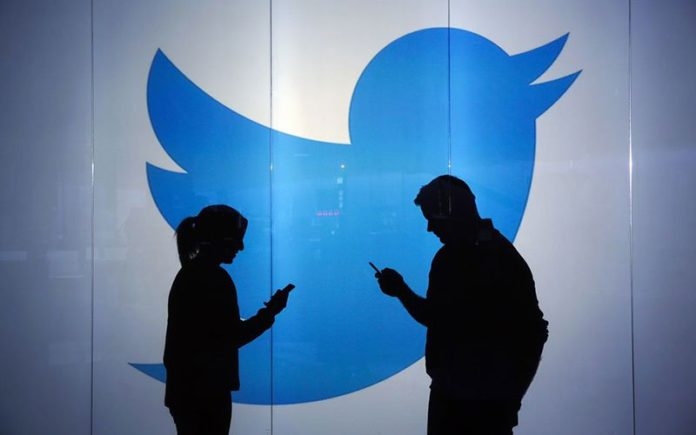Russians out to stir anger ahead of US midterms

A concerted Russian hacking and online disinformation campaign helped tip the 2016 US presidential election toward Donald Trump. Two weeks ahead of midterm congressional elections, Moscow’s operatives are at it again.
The shutdown of thousands of Russian-controlled accounts by Twitter and Facebook — plus the indictments of 14 people from Russia’s notorious troll farm the Internet Research Agency — have dulled but by no means halted their efforts to influence US politics.
#MAGA — Trump’s rallying call to “Make America Great Again” — remains the top hashtag among 18,000 tweets pumped out daily by hundreds of Russia-backed and allied Twitter accounts monitored by Hamilton 68, a tracking operation of the Alliance for Securing Democracy in Washington.
“After the election in 2016, there was a lot of talk about whether the Russians will be back in 2018,” said Suzanne Spaulding, senior advisor on the Homeland Security Program of the Center for Strategic and International Studies.
“We now know: they never left.”
On Friday the US Justice Department announced criminal conspiracy charges against the IRA clerk who manages the tens of millions of dollars it spends on information operations in the United States and Europe.
The charges documented typical social media postings on IRA accounts that purported to be American mainly aimed at fanning the flames of political anger.
“Just a friendly reminder to get involved in the 2018 Midterms,” said a tweet posted earlier this year by @johncopper16, which prosecutors say was an identity created by the IRA.
“They hate you. They hate your morals…. They hate the Police. They hate the Military. They hate YOUR President.”
Such divisive messages could influence the November 6 vote. While the presidency is not up for grabs, control of Congress is, making voter turnout in specific individual races important.
– ‘Campaign to undermine democracy’ –
That is not what has US experts worried the most, however.
“The biggest concern is really about undermining public confidence in the credibility of the outcome of the election,” said Spaulding. “It is really a broader campaign to undermine democracy.”
In 2016, according to US intelligence, Russian President Vladimir Putin oversaw a concerted effort to disrupt the election and turn voters away from Hillary Clinton in order to help Trump’s campaign.
This included hackers of the GRU military intelligence body breaking into the computers and communications of Clinton’s campaign to steal documents that could were leaked to embarrass her.
Separately, the IRA ran a huge, innovative disinformation campaign on social media that stoked anger, confusion and divisions, also aimed at boosting Trump.
On Instagram, Twitter, Facebook and elsewhere, they created online identities and groups, gathered followings, endorsing, cross-posting and sharing fake news stories and angry messages, to great effect.
That continued after the election, until one year ago when Twitter shut down hundreds of accounts that it identified as part of Russia’s political meddling.
New accounts sprung up, many of them automated bots. Rather than creating content, they amplified the huge amount of divisive material already out there, said Bret Schafer, who oversees the Hamilton 68 website.
“Now the people sitting at the IRA in St Petersburg, they don’t even have to create this stuff. It’s created for them.”
– Retweeting angry Americans –
One example, said Ben Nimmo, who runs the Atlantic Council’s Digital Forensic Research Lab, was the intense, two-week online battle over Trump’s Supreme Court nominee Brett Kavanaugh in September.
The massive amount of false reports and virulent personal attacks across social media came largely from American accounts, he said.
The Russians needed only stir the pot by retweeting and reposting them, which can be done with bots.
“There is a huge amount of angry Americans on both sides. They are more than capable of generating massive traffic on their own,” he said.
After Twitter launched a second sweep of fake accounts several weeks ago, the volume of Russian activity has fallen sharply, noted Nimmo.
The platform closed thousands that were Russian-run and had been responsible for some nine million tweets, including those mentioned in Friday’s criminal complaint.
Since then, Nimmo said, “they have definitely been trying harder to hide their tracks.”
It’s not clear however whether they are making a concerted “third wave” effort at the moment.
Two weeks before the election, the Hamilton 68 site shows Moscow has not given up, even if the intensity of its activity has waned.
Besides the ever-present MAGA tag, the Russian sites it monitors are driving out material in support of Republican Senator Ted Cruz in a tough battle in Texas and articles critical of immigrants, as well as promoting stories from conservative US media.
James Lewis, a Russia and cyber expert at CSIS, thinks the Russians are honing their skills for the next presidential race, rather than attempting to impact the current election cycle.
“They may be saving their best tricks for 2020, he said.
